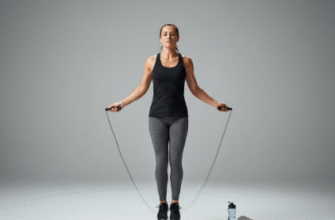Finding the right fitness instructor can feel like searching for a needle in a haystack, especially if you’re tired of the mainstream fitness world’s relentless focus on shrinking bodies and achieving a specific aesthetic. For many, exercise has become associated with punishment, guilt, or striving for an often-unattainable ideal. But what if movement could be about joy, strength, and feeling good in the skin you’re in, right now? This is where body-positive fitness instructors come in, offering a refreshing and much-needed alternative approach.
The traditional fitness landscape often centers on weight loss, calorie burning, and sculpting the “perfect” physique. This can be incredibly alienating and discouraging for people whose bodies don’t fit the narrow mold celebrated in magazines and on social media, or for those who simply want to move for reasons other than changing their appearance. Body positivity in fitness shifts the focus dramatically. It’s about embracing movement for its intrinsic benefits – improved mood, better sleep, increased energy, enhanced strength and endurance, stress relief – rather than solely for external validation or body manipulation.
What Exactly is Body Positive Fitness?
Body-positive fitness isn’t about ignoring health; it’s about redefining it and making it accessible and enjoyable for everyone. It operates on a foundation of respect, inclusivity, and self-compassion. Here’s what typically defines this approach:
Focus on Function and Feeling: Instead of asking “How many calories did you burn?” or “How much weight did you lose?”, a body-positive instructor might ask, “How did that movement feel in your body?” or “Did you notice feeling stronger or more energized?”. The emphasis is on internal cues and experiences, celebrating what your body can do rather than just how it looks.
Weight Neutrality: This approach recognizes that health and well-being come in all shapes and sizes. Instructors avoid promoting weight loss as the primary goal or outcome of exercise. They don’t use weight-loss challenges, weigh-ins, or before-and-after photos focused on size reduction. The goal is to improve health behaviours and outcomes regardless of weight changes.
Inclusive Environment: Body-positive spaces strive to be welcoming to people of all sizes, shapes, ages, abilities, genders, and backgrounds. This is reflected in the language used, the visual representation in marketing materials, and the way classes are structured.
Joyful Movement: Exercise isn’t presented as penance for eating or a chore to be endured. The aim is to help individuals find forms of movement they genuinely enjoy, fostering a sustainable and positive relationship with physical activity. It’s about celebrating movement, not dreading it.
Emphasis on Modifications: Instructors readily offer and encourage modifications for exercises, ensuring that everyone can participate safely and effectively at their own level, without judgment or feeling singled out. It’s understood that bodies have different needs on different days.
Why This Approach Matters
Seeking out a fitness professional who aligns with body-positive principles can profoundly impact your relationship with exercise and yourself. The benefits often extend far beyond the physical:
- Reduced Intimidation: Gyms and fitness classes can be daunting. A body-positive environment aims to dismantle that fear, creating a space where you feel accepted and supported from the moment you walk in.
- Sustainable Habits: When movement is tied to joy and well-being rather than punishment or a number on the scale, you’re far more likely to stick with it long-term.
- Improved Body Image: Constantly being told your body isn’t good enough is damaging. Body-positive fitness helps you appreciate your body for its strength and capabilities, fostering respect and appreciation.
- Focus on Health, Not Just Weight: You can pursue health-promoting behaviours – like moving your body regularly – without making weight loss the goal. This approach honours the complexity of health.
- Mental Health Boost: Exercise is a powerful tool for managing stress and improving mood. A positive environment enhances these benefits, removing the added pressure and potential anxiety associated with traditional fitness culture.
How to Spot a Genuinely Body Positive Instructor
Many fitness professionals are now using terms like “body positive” or “inclusive,” but not all truly embody the philosophy. It takes a bit of investigation to find someone genuinely committed to these principles. Here’s what to look for:
Check Their Language
Pay close attention to the words they use on their website, social media posts, and class descriptions.
Green Flags: Look for terms like “joyful movement,” “intuitive exercise,” “movement for well-being,” “all bodies welcome,” “strength,” “energy,” “stress relief,” “listen to your body,” “Health At Every Size informed,” “weight-neutral.” They talk about the *feeling* and *function* of movement.
Red Flags: Be wary of language centered on “burning calories,” “shredding fat,” “earning your food,” “guilt-free workouts,” “transformation challenges” (especially those focused solely on appearance), “bikini body prep,” or constant emphasis on weight loss and body sculpting.
Examine Their Visuals
Do their promotional photos and videos showcase a diversity of bodies? Are people of different sizes, ages, ethnicities, and apparent abilities represented? Or does their marketing exclusively feature thin, young, conventionally “fit” individuals? True inclusivity should be reflected visually.
Investigate Their Philosophy and Credentials
Read their “About Me” page or mission statement. Do they explicitly mention a body-positive, weight-neutral, or HAES (Health At Every Size®) approach? While not essential, certifications or training in inclusive coaching, trauma-informed movement, or adaptive fitness can be positive indicators. Look for instructors who talk about *why* they adopt this approach.
Verified Approach: Health At Every Size® (HAES) is a registered trademark and a framework promoting size-acceptance, ending weight discrimination, and focusing on health outcomes independent of weight. Instructors aligning with HAES principles typically prioritize respectful care, eating for well-being, and life-enhancing movement. Finding an instructor familiar with HAES can be a strong indicator of a body-positive philosophy.
Understand the Class Focus
What is the primary goal of their classes or training sessions? Is it about hitting personal bests based on *your* starting point, learning new skills, improving mobility, or simply enjoying the movement? Or is the focus relentlessly on aesthetic changes and calorie expenditure? Observe if modifications are offered proactively and without making participants feel inadequate.
Read Reviews and Testimonials
What do past or current clients say? Look for reviews mentioning feeling comfortable, accepted, empowered, and supported regardless of their size or fitness level. Comments highlighting a non-judgmental atmosphere are excellent signs.
Engage Directly: Ask Questions
Don’t hesitate to reach out before committing. Ask direct questions:
- “What is your approach to fitness regarding body image and weight?”
- “How do you accommodate different fitness levels and abilities in your classes?”
- “Do you focus on weight loss as a primary goal for clients?”
- “How do you foster an inclusive environment?”
Their answers (or lack thereof) will be very revealing. Consider taking a trial class to experience their style firsthand. Notice how they interact with participants, the language they use during the session, and the overall vibe of the class.
Where Can You Find Them?
Finding these gems might require looking beyond the big-box gyms, although some larger chains are slowly becoming more aware.
- Online Directories: Search for directories specifically listing HAES-aligned or body-positive fitness professionals.
- Social Media: Use hashtags like #BodyPositiveFitness, #InclusiveFitness, #HAESFitness, #JoyfulMovement, #WeightNeutralFitness, #AllBodiesAreGoodBodies. Many instructors build communities online.
- Local Independent Studios: Smaller, community-focused studios or independent trainers are often more likely to adopt an inclusive philosophy.
- Community Centers: Sometimes offer programs with a less intense, more community-oriented focus.
- Referrals: Ask like-minded friends, therapists, or registered dietitians (especially those specializing in intuitive eating or HAES) for recommendations.
Important Consideration: Be aware that “body positivity” has become a buzzword. Some may use the term superficially for marketing without truly understanding or implementing its core principles. Always dig deeper than the label and assess their actual practices and language.
Final Thoughts: Your Movement, Your Choice
Finding a body-positive fitness instructor is about finding a space where you can connect with your body and movement in a way that feels supportive, respectful, and genuinely good. It’s about shifting the focus from chasing an external ideal to cultivating internal well-being. Exercise has incredible benefits to offer everyone, regardless of size or shape, and the right instructor can help you unlock those benefits without the baggage of diet culture and body shame.
The search might take a little effort, but finding a professional who helps you celebrate your body and find joy in movement is worth it. You deserve to feel empowered and comfortable while pursuing fitness, on your own terms. Don’t settle for environments that make you feel less than. Keep looking until you find the instructor and community that truly lift you up.








